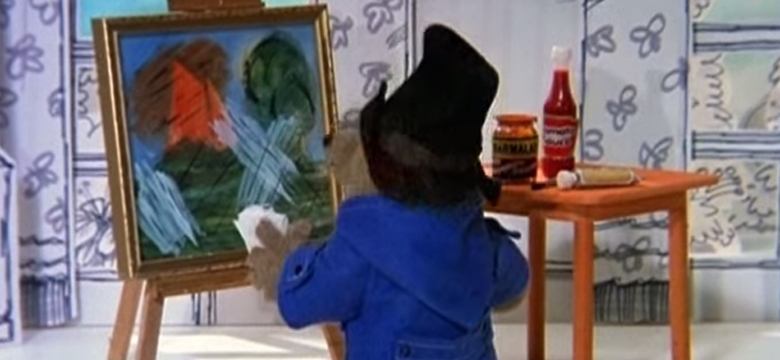Continuing with our Paddington Bear series, I’ll be examining Paddington and the Old Master[i] and Too Much Off the Top[ii], where Paddington learns a great deal about art and antiques from his friend Mr. Gruber, who owns a shop in the Portobello Road. Their friendship not only affords cocoa and buns every morning, but provides the foundation for: Paddington’s Guide to Fine and Decorative Arts.
- Things aren’t always what they seem. Mr. Gruber shows Paddington a valuable Old Master he found hidden underneath another painting while cleaning it. Paddington is also shocked to learn that a former assistant in Mr. Gruber’s shop nearly sold a valuable “early Spode” vase for a paltry £5.
Lesson: While Paddington may fall off his deck chair at the thought of anyone not knowing the value of antique pottery, not everyone has the advantage of taking their daily “elevenses” with an antique dealer. Often people inherit or acquire items without knowing their true value. If you are not knowledgeable yourself, have your arts and antiques appraised by an expert. Many auction houses provide Free Auction Evaluations for this very purpose.
- Look for a signature. Whenever Paddington signs a document (or canvas), he always uses his special paw print to show it is genuine.
Lesson: When it comes to art, authenticity is important. Examination of the artist’s signature or stamp is one of the ways to determine if an item is genuine. Unsigned and unstamped items can be difficult to authenticate, and may only have decorative value since they can cannot be attributed to a listed artist.
- Leave cleaning and restoration to the professionals. Inspired by Mr. Gruber’s discovery, Paddington decides to look for his own Old Master underneath a painting of a sailboat in the Brown’s drawing room. Although he uses half a bottle of paint remover, Paddington finds only blank canvas underneath. He then tries to repair the damage using a box of old paints from the cupboard under the stairs.
Lesson: Expert appraisers can examine canvases under black light if you truly suspect an old master lies hidden beneath your painting. So there’s no need to break out the paint remover. They also use this technique to inspect paintings for any restoration, which can considerably lower its value, depending on the condition. This actually happens. Case in point, the botched restoration of the “Ecce Homo” fresco in Spain. It seems counterintuitive, but artwork may fetch a higher price if it has not been restored.
- Modern Art is very much in vogue. While attempting to fix the painting of a sailboat, Paddington gets swept away by his own creative energy. The result is “more of a design than a picture”, with no visible trace of the original. When Paddington’s painting is mistakenly entered into a local art competition, it is awarded first prize, as the judges favor abstract art.
Lesson: Paddington’s artistic triumph certainly contradicts Evelyn Waugh’s supposition that “modern art is all bosh”. Not only it is highly collectible, but modern and contemporary art continues to sell well in both retail and auction markets. Though I confess to being personally confounded by the likes of Warhol’s Invisible Art.
[i] A Bear Called Paddington, 1958
[ii] Paddington at Work, 1966
By Holly Culbreath
